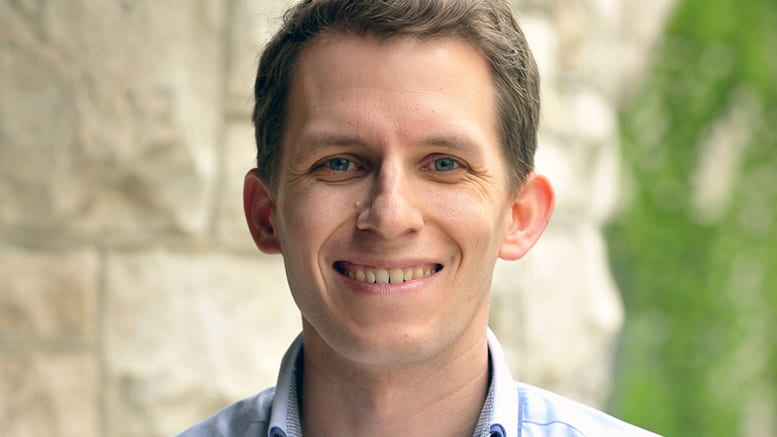Meet Assistant Professor Adam Miller of the Department of Physics and Astronomy
October 19, 2021

Weinberg College welcomes Assistant Professor Adam Miller to the Department of Physics and Astronomy!
Miller recently offered insight into his background, recent work, and past accomplishments. He is a fellow for the Center for Interdisciplinary Exploration and Research in Astrophysics (CIERA), doing work at the intersection of astronomy and data science.
Where are you from? Where did you study?
I grew up in Evanston, IL about two and a half miles from Northwestern. I went to ETHS (where I desperately wanted to act in the school plays but I rarely was cast). After that I went to MIT (where I was frequently cast to act in plays), before heading to UC Berkeley for my PhD.
What inspired you to pursue your area of study?
I was fairly determined to be a particle physicist as an undergraduate, but in the summer after my second year I participated in an astronomy research program at Northwestern. During that summer, I was the first ever person to observe a specific transition within an iron atom in outer space (in hindsight this was not that big a deal). At that point I was hooked, there was no turning back from a career in astronomy.
Please describe your research.
I work at the intersection of astronomy and data science. My work mostly focuses on survey data where we monitor how different sources (stars, galaxies, etc.) evolve with time. My collaborators and I have developed machine learning models to identify varying sources and later classify them as we collect information on how they evolve. In the last few years I’ve mostly focused on understanding the mechanisms that cause white dwarf stars to explode, these explosions produce most of the iron in the Universe and therefore contribute to the (future) formation of planets.
What are you working on right now that excites you the most?
It has long been assumed that white dwarf stars will become unstable and explode if their mass reaches about 1.4 times the mass of the sun. Some recent theoretical work suggests that some white dwarfs can explode at lower masses, we are designing experiments that include observations in the infrared to test these theories and see if we can track down some of these “low mass” white dwarf explosions.
How do you enjoy spending your free time?
Most mornings I wake up early and run along the lakefront. It’s less fun now than when I was a kid, but I also enjoy following and watching the Chicago Bulls.
What is most fulfilling to you about teaching?
When working with students, I find it extremely rewarding when they directly apply concepts that we’ve discussed into their own research. Especially when the concept is a difficult one that can take many months to fully grasp.
What accomplishments would you like to share?
In my final year as an undergraduate I was awarded the Louis B. Sudler prize in the arts, which is granted to “a graduating senior who has demonstrated excellence or the highest standards of proficiency in music, theater, painting, sculpture, design, architecture or film.” While I spent most of my time studying physics, I was always most proud of my work as a writer, director, and actor as an undergrad.
Science & Technology

Northwestern accelerates quantum research with NVIDIA technology
September 19, 2025
NVIDIA code could help researchers tackle computationally demanding tasks hindering quantum research Northwestern University physicists are using NVIDIA technology to tackle the computationally demanding tasks hindering quantum research. Northwestern theoretical physicist Jens Koch and his research group…

CRISPR’s efficiency triples with DNA-wrapped nanoparticles
September 18, 2025
New system delivers CRISPR machinery more safely and effectively into cells With the power to rewrite the genetic code underlying countless diseases, CRISPR holds immense promise to revolutionize medicine. But until scientists can deliver its…

Passion for the planet: A new generation of environmental stewards starts here
May 29, 2025
Over the last two decades, the Weinberg College-housed Program in Environmental Policy and Culture (EPC) at Northwestern has embraced the humanities and social sciences and cultivated a new generation of environmental stewards. Growing up in…

Northwestern receives $25 million gift to advance adolescent mental health research
May 16, 2025
New institute will study psychology of emerging adults, leading to innovative wellness programming for students at the University and beyond Northwestern University is launching the Institute for Adolescent Mental Health and Well-Being, an interdisciplinary initiative…



